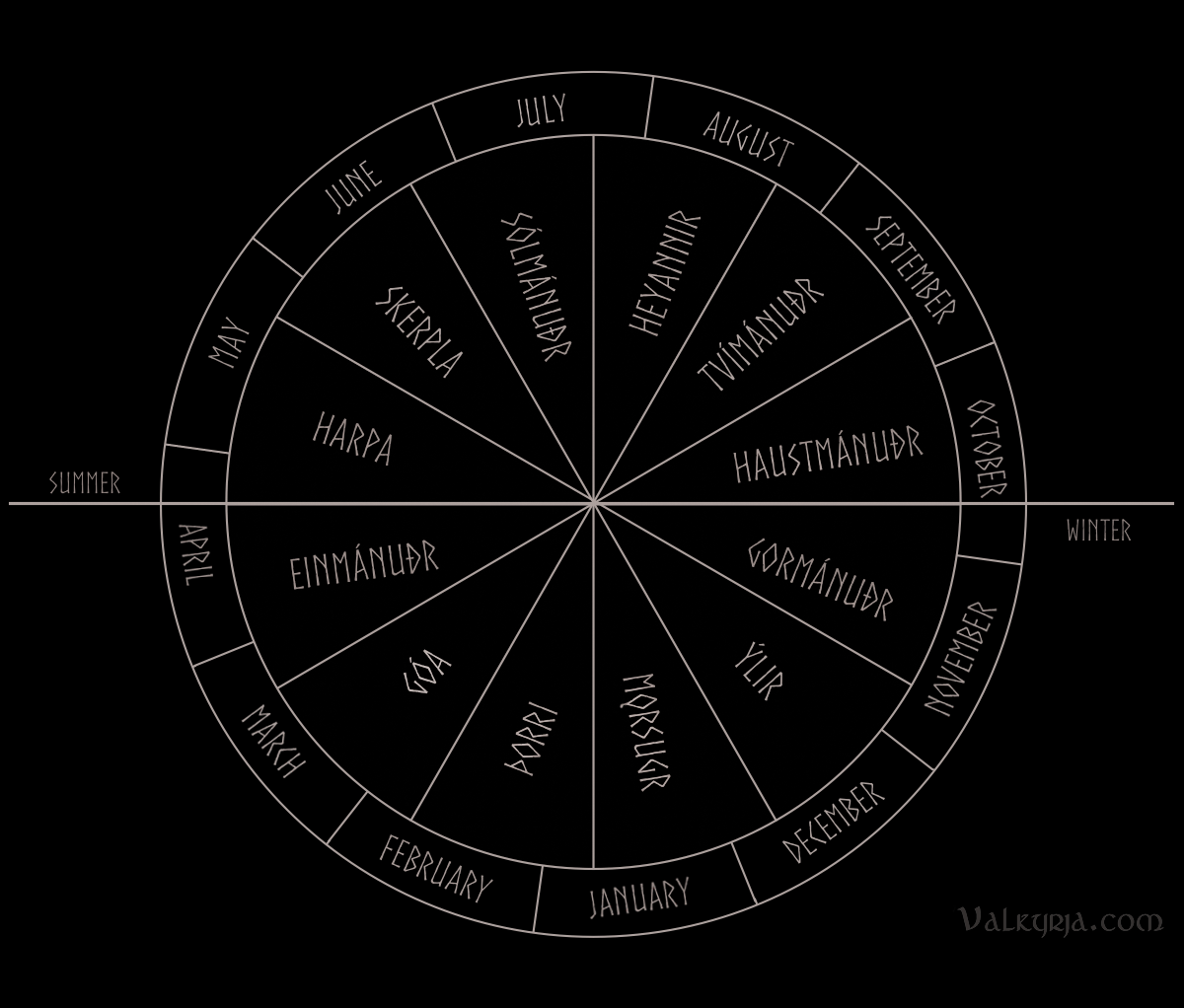|
|
||||||||||
• This blog post was revised and expanded in 2021. For the updated version, click here • This week we are entering Haustmánuðr, which is the sixth and last summer month according to the old Norse calendar. Haustmánuðr means the month of harvest/fall, but it was also called Garðlagsmánuðr - a name decribing that it is the time to fix up the fences and walls around the farm before the winter. As Christianity came and spread across Scandinavia, the old way of measuring time was replaced by the Julian calendar around the mid 12th century (1). But in Iceland specifically, the Christianization was a peculiar and gradual process (2-4). The old names of the months remained in the Icelandic language much longer, and the Latin names were not adopted into the common tongue until the late 18th century (5). In fact, they still exist to some degree today, much due to their link to folk tales and traditions such as the Þórrablót which is still celebrated across and regardless of religious beliefs. Most modern Icelanders will also know that the men's day is celebrated on the first day of Þorri while the women's day is on the first day of Góa, and the first day of summer remains a public holiday falling on the first day of Harpa. In Medieval Iceland, priests, law-speakers, policy makers and other administrators of the Icelandic society tried to synchronize the different calendar systems that were in use, resulting in a rich material of calendar texts. But this was mingled with basic principles from the Christian church calendar (1), and as a result, it is not clear how this system compares to the pre-Christian system in Iceland. I have drawn it up here as compared to the modern Gregorian calendar (6): 
Since that accounts for 360 days, four additional days were added to the third summer month, just before the midsummer. But with 364 days there was still need for a leap year system. So, to make up for the divergence with the solar year, an additional week was added at the end of summer every 7th year, called sumarauki (literally, "summer addition"). This is attested in a paragraph in Íslendingabók (the book of Icelanders) that can be translated to: The wisest men of the country observed from the motion of the sun that the summer moved back towards the spring. But there was no one to tell them that there is one day more in two misseris than you can count using whole weeks, and that was the reason. There was a man called Þorsteinn surtr. When they came to the Althing he walked up to the Law-hill and proposed that to every seventh summer a week should be added, to see how that would work. The proposal was implemented in law. (11). It is however deemed unlikely that the days in the old Norse calendar were counted very accurately, especially in the northernmost areas where the sun barely sets during the mid-summer months. Time was counted in weeks of (or weeks left of) summer or winter rather than with numbered days, and years were not counted by an absolute chronology. Although seemingly complicated at first glance, I do not find this old calendar to be particularly more so than the Julian or Gregorian systems, where we still use names of months based on the victories and whims of long-gone emperors, and with lengths varying between 28-31 days, leap-years and so on...
# Comments |
 
|
|||||||||
|
||||||||||
